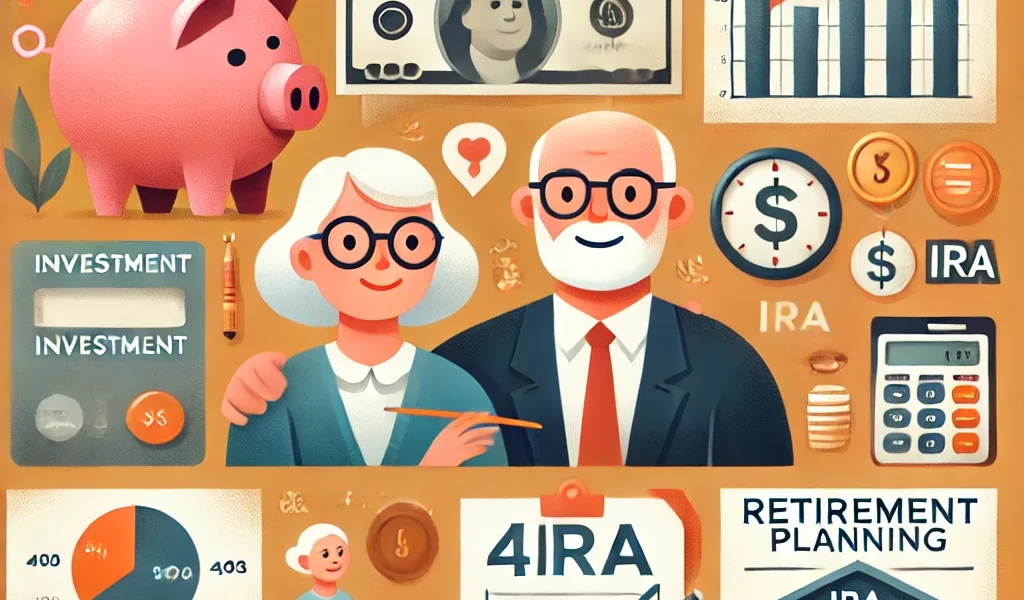Planning for retirement is one of the most crucial financial decisions you will ever make. A well-structured retirement plan ensures financial security, peace of mind, and a comfortable lifestyle after you stop working. In this comprehensive guide, we will explore the best retirement plans available, their benefits, and how to choose the right one based on your financial goals.
Why Retirement Planning is Important
Retirement planning is essential for maintaining financial independence in your later years. It helps you:
- Ensure a steady income post-retirement
- Manage healthcare and unexpected expenses
- Beat inflation and maintain purchasing power
- Achieve long-term financial security
Types of Retirement Plans
1. Employer-Sponsored Retirement Plans
These are retirement plans offered by employers to their employees. They provide tax benefits and, in some cases, employer contributions.
a) 401(k) Plans (For U.S. Employees)
- Employees contribute a portion of their salary before taxes
- Employers may match contributions
- Funds grow tax-deferred until withdrawal
- Withdrawals before age 59½ may incur penalties
b) Pension Plans
- Employers contribute funds on behalf of employees
- Benefits are based on salary history and years of service
- Common in government and large corporations
2. Individual Retirement Accounts (IRAs)
These plans allow individuals to save for retirement with tax advantages.
a) Traditional IRA
- Contributions are tax-deductible
- Taxes are paid upon withdrawal
- Required minimum distributions (RMDs) start at age 73
b) Roth IRA
- Contributions are made with after-tax income
- Withdrawals are tax-free after retirement
- No RMDs, allowing continued tax-free growth
3. Self-Employed Retirement Plans
For business owners and freelancers, there are several retirement plans available:
a) Solo 401(k)
- Designed for self-employed individuals
- Higher contribution limits compared to traditional IRAs
- Tax advantages similar to regular 401(k) plans
b) Simplified Employee Pension (SEP) IRA
- Allows self-employed individuals to contribute for themselves and employees
- Contributions are tax-deductible
4. Government Retirement Plans
Many countries offer government-backed retirement plans such as:
- Social Security (U.S.): Provides monthly payments based on earnings history
- National Pension System (India): A voluntary contribution system for retirement savings
- Superannuation (Australia): A mandatory system where employers contribute to employees’ retirement funds
How to Choose the Best Retirement Plan
Selecting the right retirement plan depends on various factors, including:
- Your Income Level: Higher-income individuals may benefit more from tax-deferred plans, while lower-income individuals may prefer Roth options for tax-free withdrawals.
- Employment Status: Salaried employees may benefit from employer-sponsored plans, while self-employed individuals should consider Solo 401(k) or SEP IRAs.
- Tax Considerations: If you expect a lower tax bracket post-retirement, a traditional IRA may be beneficial. If you anticipate higher taxes, Roth IRA is a better option.
- Investment Preferences: Some plans allow greater investment flexibility, while others provide stable, fixed returns.
- Risk Tolerance: Pension plans offer guaranteed income, while market-based plans like 401(k) and IRAs involve investment risks.
Maximizing Your Retirement Savings
To ensure financial security, consider these tips:
1. Start Early
- The power of compounding helps build wealth over time
- Even small contributions can grow significantly over decades
2. Contribute Regularly
- Make consistent contributions to retirement accounts
- Take advantage of employer matching in 401(k) plans
3. Diversify Investments
- Allocate funds across stocks, bonds, and other assets
- Balance risk and return based on retirement goals
4. Keep Track of Expenses
- Reduce unnecessary spending
- Increase savings as income grows
5. Plan for Healthcare Costs
- Consider health savings accounts (HSAs) to cover medical expenses
- Invest in long-term care insurance
Common Mistakes to Avoid in Retirement Planning
- Delaying Retirement Savings: The later you start, the harder it becomes to accumulate sufficient funds.
- Ignoring Inflation: Your savings should grow faster than inflation to maintain purchasing power.
- Not Diversifying Investments: Relying on a single asset class can increase risk.
- Withdrawing Funds Early: Early withdrawals may result in penalties and reduced retirement corpus.
- Underestimating Life Expectancy: Ensure your savings last throughout retirement.
Conclusion
A secure retirement requires careful planning, disciplined savings, and strategic investments. By choosing the right retirement plan based on your financial situation and future goals, you can enjoy a comfortable and stress-free retirement. Whether you are an employee, self-employed, or a government worker, there are tailored retirement plans available to help you achieve financial security.How to Choose the Right Retirement Plan Based on Your Income




